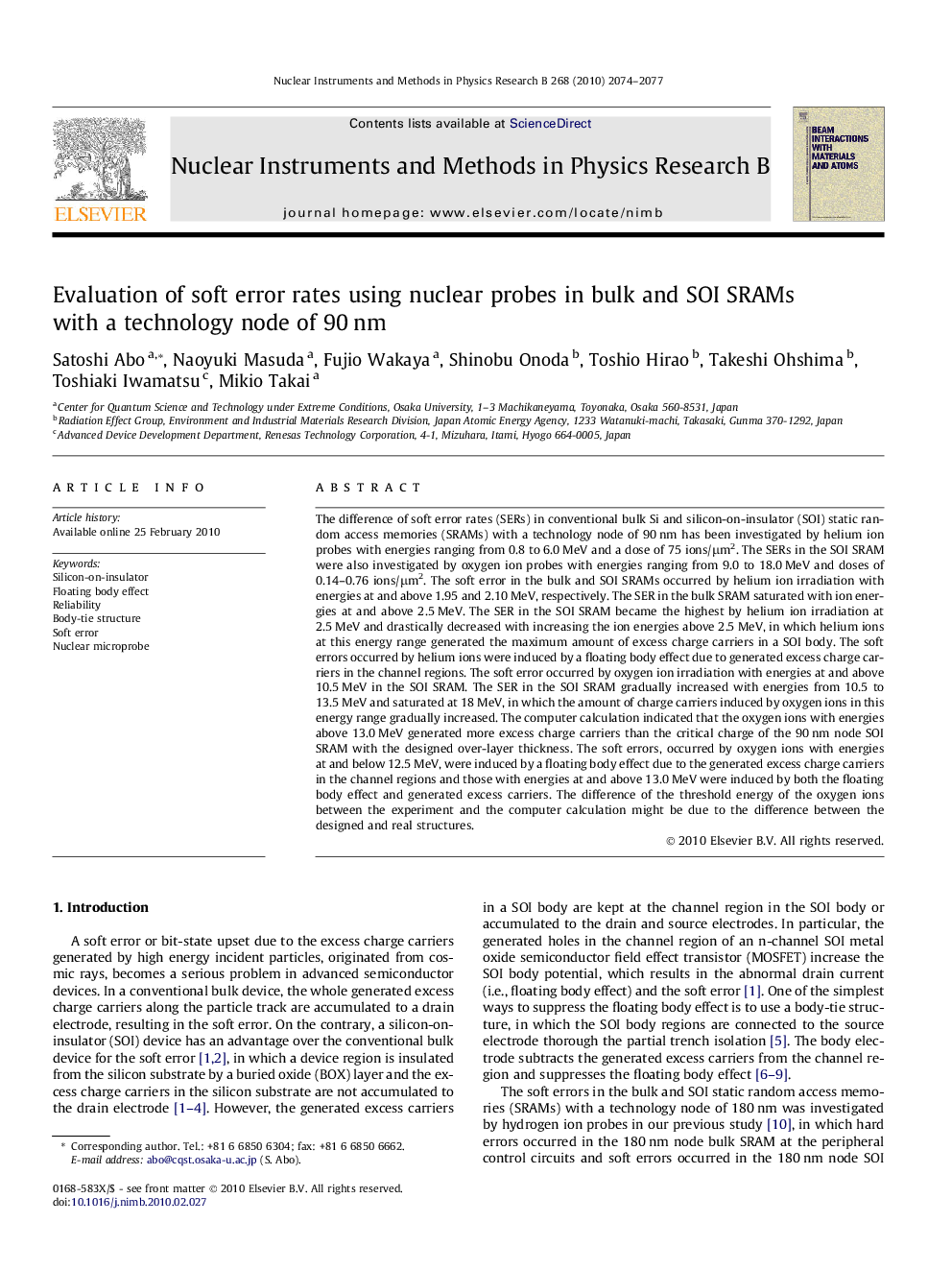| کد مقاله | کد نشریه | سال انتشار | مقاله انگلیسی | نسخه تمام متن |
|---|---|---|---|---|
| 1684281 | 1518749 | 2010 | 4 صفحه PDF | دانلود رایگان |

The difference of soft error rates (SERs) in conventional bulk Si and silicon-on-insulator (SOI) static random access memories (SRAMs) with a technology node of 90 nm has been investigated by helium ion probes with energies ranging from 0.8 to 6.0 MeV and a dose of 75 ions/μm2. The SERs in the SOI SRAM were also investigated by oxygen ion probes with energies ranging from 9.0 to 18.0 MeV and doses of 0.14–0.76 ions/μm2. The soft error in the bulk and SOI SRAMs occurred by helium ion irradiation with energies at and above 1.95 and 2.10 MeV, respectively. The SER in the bulk SRAM saturated with ion energies at and above 2.5 MeV. The SER in the SOI SRAM became the highest by helium ion irradiation at 2.5 MeV and drastically decreased with increasing the ion energies above 2.5 MeV, in which helium ions at this energy range generated the maximum amount of excess charge carriers in a SOI body. The soft errors occurred by helium ions were induced by a floating body effect due to generated excess charge carriers in the channel regions. The soft error occurred by oxygen ion irradiation with energies at and above 10.5 MeV in the SOI SRAM. The SER in the SOI SRAM gradually increased with energies from 10.5 to 13.5 MeV and saturated at 18 MeV, in which the amount of charge carriers induced by oxygen ions in this energy range gradually increased. The computer calculation indicated that the oxygen ions with energies above 13.0 MeV generated more excess charge carriers than the critical charge of the 90 nm node SOI SRAM with the designed over-layer thickness. The soft errors, occurred by oxygen ions with energies at and below 12.5 MeV, were induced by a floating body effect due to the generated excess charge carriers in the channel regions and those with energies at and above 13.0 MeV were induced by both the floating body effect and generated excess carriers. The difference of the threshold energy of the oxygen ions between the experiment and the computer calculation might be due to the difference between the designed and real structures.
Journal: Nuclear Instruments and Methods in Physics Research Section B: Beam Interactions with Materials and Atoms - Volume 268, Issues 11–12, June 2010, Pages 2074–2077